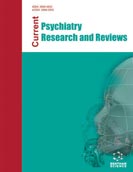Abstract
Background: Despite the huge global socioeconomic burden of depressive disorders, depression is often underreported and undertreated due to a lower level of awareness from both healthcare providers and payers in many countries. The lack of an evidence-based approach to care delivery has resulted in the inequitable allocation of health resources, causing resource scarcity issues in Argentina.
Objective: The aim of this paper is to identify the gaps in evidence related to patients’ journeys and barriers in the existing care ecosystem contributing to poor access to quality care for depression in an Argentine context.
Methods: A semi-systematic review of the literature was performed from 2012 to 2021 using Medline, Embase and Biosis and other unstructured sources (Google Scholar, the World Health Organization (WHO) website, Argentina Ministry of Health website, and Incidence and Prevalence Database (IPD) on awareness, screening, diagnosis, treatment, adherence and/or control of depression amongst adults (≥18 years). Any identified data gaps were supplemented with anecdotal data from local experts.
Results: Low percentages of adult patients with depression awareness (<25%), screening (<10%), diagnosis (37.5%), received treatment (41.9%), adherence to treatment (37.5%), and control (37.5%) were observed.
Conclusion: Ensuring a care continuum while considering full clinical remission with functional recovery as a therapeutic goal and advocacy for patient-centric adjustments in existing mental health policies would be key drivers for improving the depression care scenario.
Keywords: Depression, depression awareness, mental health, functional recovery, psychiatry, psychology.
[http://dx.doi.org/10.1016/S0140-6736(18)32279-7] [PMID: 30496104]
[http://dx.doi.org/10.1016/j.jsmc.2014.11.009] [PMID: 26055669]
[http://dx.doi.org/10.1176/appi.ajp.2015.15020162] [PMID: 26806872]
[http://dx.doi.org/10.1111/acps.12774] [PMID: 28767127]
[http://dx.doi.org/10.1016/j.neubiorev.2016.07.002] [PMID: 27395342]
[http://dx.doi.org/10.1007/s11136-018-1936-y] [PMID: 30006664]
[http://dx.doi.org/10.1016/j.psychres.2016.04.111] [PMID: 27156024]
[http://dx.doi.org/10.1590/1516-4446-2018-0315] [PMID: 30994857]
[http://dx.doi.org/10.1111/dme.13611] [PMID: 29478265]
[http://dx.doi.org/10.1016/j.jval.2010.11.006] [PMID: 21669372]
[http://dx.doi.org/10.1370/afm.1260] [PMID: 21747101]
[http://dx.doi.org/10.1016/j.pop.2012.03.010] [PMID: 22608874]
[http://dx.doi.org/10.1016/S0140-6736(12)61694-8] [PMID: 23040842]
[http://dx.doi.org/10.1186/1744-8603-7-36]
[http://dx.doi.org/10.1007/s12325-020-01519-3] [PMID: 33052560]
[http://dx.doi.org/10.2147/JHL.S288966] [PMID: 33542673]
[http://dx.doi.org/10.1590/1516-4446-2018-0036] [PMID: 30427387]
[http://dx.doi.org/10.1007/s00127-017-1475-9] [PMID: 29302708]
[http://dx.doi.org/10.1016/j.jad.2011.09.032] [PMID: 22036799]
[PMID: 32119723]
[http://dx.doi.org/10.1016/j.jad.2017.11.091] [PMID: 29179143]
[http://dx.doi.org/10.31053/1853.0605.v77.n3.28561] [PMID: 32991105]
[http://dx.doi.org/10.1097/RHU.0000000000001506] [PMID: 32732521]
[http://dx.doi.org/10.1017/S2045796019000477] [PMID: 31452485]
[http://dx.doi.org/10.1080/23288604.2018.1477537] [PMID: 30067439]
[http://dx.doi.org/10.1192/S1749367600002599] [PMID: 31508088]
[http://dx.doi.org/10.1016/S2215-0366(17)30096-2] [PMID: 28433615]
[http://dx.doi.org/10.5172/hesr.2007.16.3-4.279]
[http://dx.doi.org/10.1370/afm.558] [PMID: 16868233]
[http://dx.doi.org/10.3389/fpsyg.2019.00506] [PMID: 30906276]
[http://dx.doi.org/10.1016/j.jad.2016.02.066] [PMID: 26967917]
[http://dx.doi.org/10.1503/cmaj.170691] [PMID: 29335262]
[http://dx.doi.org/10.1016/j.jad.2015.12.029] [PMID: 26748881]
[http://dx.doi.org/10.3389/fpsyt.2019.00271] [PMID: 31110481]
[http://dx.doi.org/10.1007/BF03391681] [PMID: 25339792]
[http://dx.doi.org/10.26633/RPSP.2018.165] [PMID: 31093193]
[http://dx.doi.org/10.1590/1516-4446-2015-1652] [PMID: 27111703]
[http://dx.doi.org/10.1192/S2056474000000623] [PMID: 29093869]
[http://dx.doi.org/10.1111/hex.12436] [PMID: 26889742]












